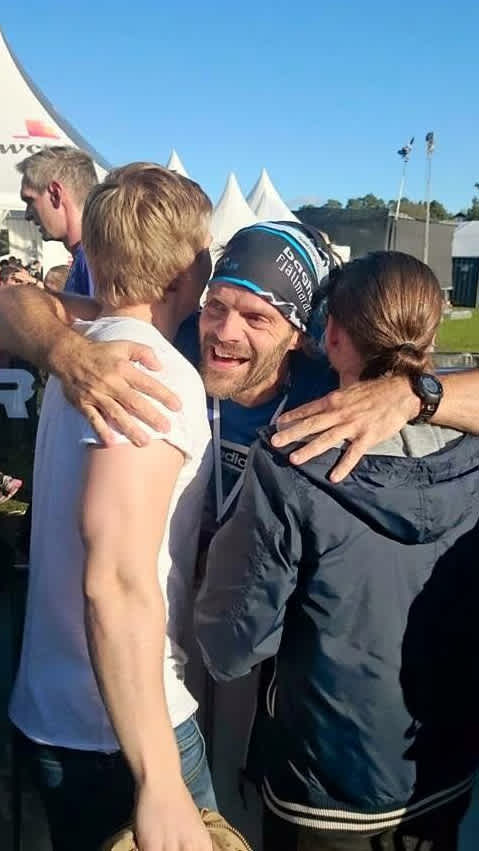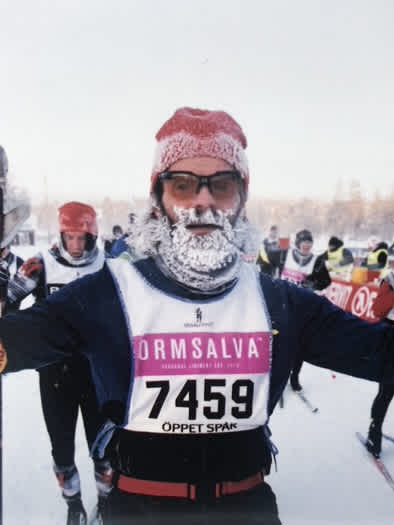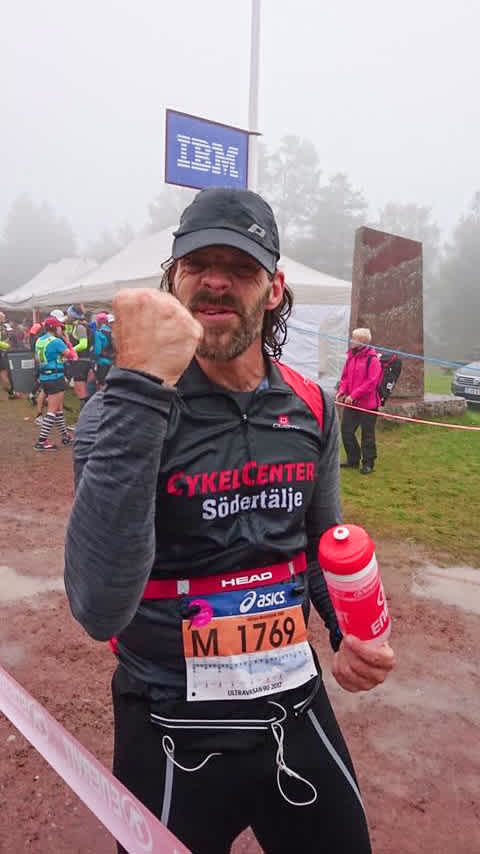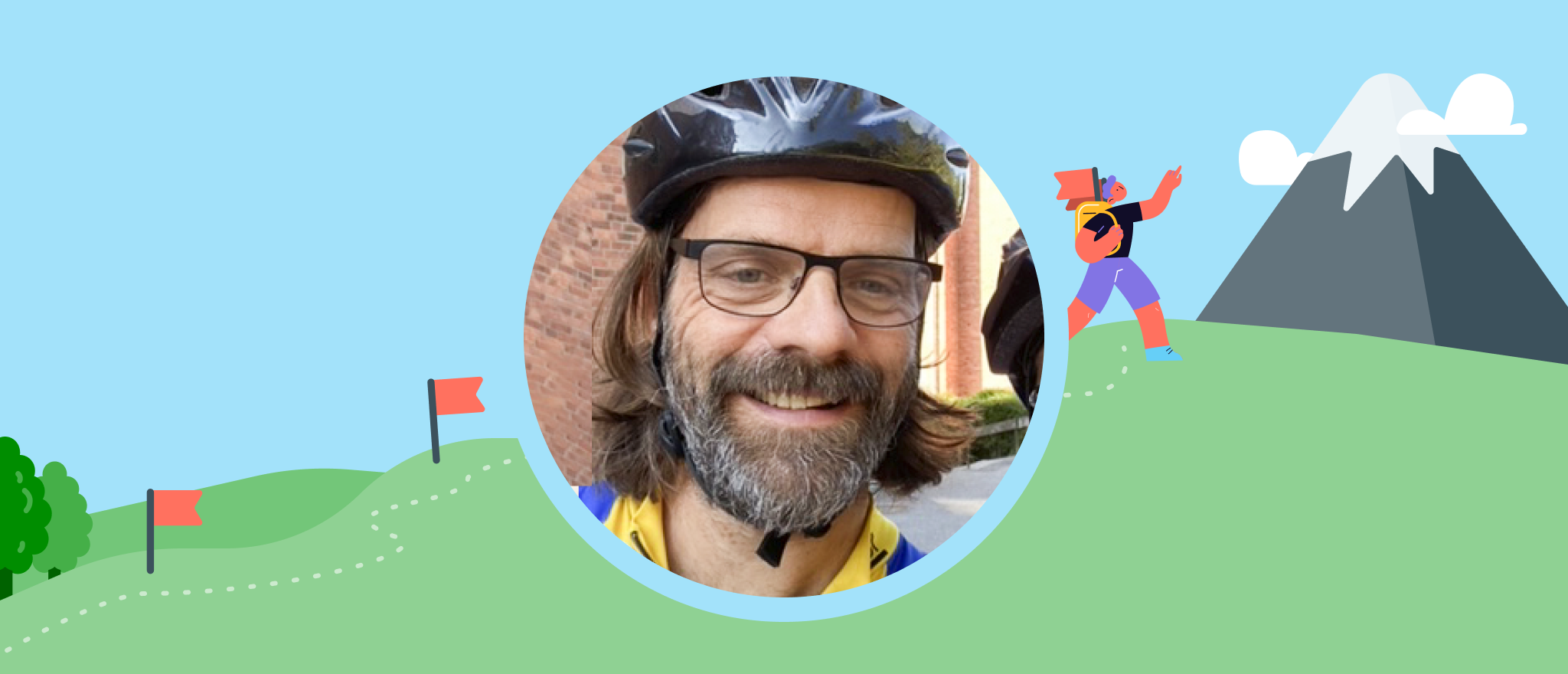It all changed when Göran started listening inwards
Göran has had ankylosing spondylitis, AS, for 30 years. A few years ago, he was in so much pain that he saw life in a wheelchair ahead of him. For the sake of his sons, he decided to make a change. He started listening to his body and asking for help. Now, he has completed several Swedish Classics and an Ironman.
Who are you?
My name is Göran Wahlstedt, and I am 52 years old. I was diagnosed with ankylosing spondylitis (AS) in the late 1980s, when I was 18 or 19 years old. The only information I got about the disease was a small brochure, and it was difficult to understand what my diagnosis meant. I have had to learn a lot on my own, and it has been a long journey to get where I am today.
How were the years after getting the diagnosis?
After I got that brochure, life went on. I became a father quite early. Since the disease activity went up and down, it was hard to understand the situation. I didn't notice I was getting worse and worse over time. I lacked a good understanding of the disease—I chose to ignore it. Maybe I did so because of my life situation and the fact that it’s quite an invisible disease. Eventually, I was walking around like a zombie, I was in a lot of pain, and everything was just about surviving.
Looking back, I know what I did wrong: I didn't look at myself in the mirror, and I didn't admit the severeness of the situation, even to myself. I didn't ask for help.
The bad periods lasted longer and longer, and eventually, I had no good periods at all. By 2012, I could hardly walk. I saw life in a wheelchair ahead of me. I was stiff, my whole body hurt, and I could barely breathe. I limped along, looking like an S in profile, with my back bent, and my head turned down.
How did you turn things around?
Thinking about my sons finally made me seek help and try new medicines. I felt I owed them to do everything to feel better. It took maybe a year before I felt the treatment was working. I slowly realized I wasn't in as much pain as I used to be.
However, I was still incredibly stiff and lacked both fitness and strength. I was living in the body of a 90-year-old. I tried to soften my neck and hips using small, simple remedies like light stretching and movement exercises, and was out walking, initially from the front door to the first lamppost. The next day, I aimed for the next lamppost.
I tried to build up my strength very slowly. I set short-term goals that were challenging but still realistic. I literally took one day at a time and focused on being able to do one push-up or pass ten lampposts. As I got stronger, I set higher goals. It took a year for my body to respond properly.

How did you get started with running?
After I’d succeeded in walking from lamppost to lamppost, I wanted to try jogging again. I had really loved running when I was younger! One day, I managed to get my breathing going properly during a jog. I suddenly felt the stiffness in my chest and chest wall loosen. It was like being saved—what a joy to be able to breathe properly again! I had been like a rusty machine, but now I was back in working order.
After the experience of actually being able to run again, I just carried on. I dared to go to a gym; I hadn't done that before. I got stronger and more flexible and even took up spinning. I began to think about running a race. Eventually, I completed the Stockholm Half Marathon, which I, a few years earlier, couldn't imagine I would ever be able to do.
After that, I dreamed of doing a so-called Swedish Classic, and later an Ironman. I felt I had what it took. I got skis, roller skis, a racing bike, my first running pants, cycling pants ... I really enjoyed buying equipment for something that my body and I had been longing to do.
What does exercise mean to you?
The importance of exercise for me has changed over time. At first, it was about survival and making a better life for myself. It still is, but now it's also about keeping my body healthier. I want to live a long and healthy life. I feel we are made for this—we are made for movement.
Even before I became ill, I had thought about doing a Swedish Classic, and I was curious about Ironman. If I hadn't fallen ill, maybe I would have done all this years ago. It has taken time to get here, but now I understand why I feel so strongly about doing this. It's an old dream.

What would you like to say to others who have been diagnosed with AS?
Look at yourself in the mirror. I have realized how important it is to listen inwards and dare to ask for help. You may need to "walk beside" the illness for a while to come to terms with it and find the strength to feel better. Try to increase self-awareness in different ways, and don't lose hope. It's essential to find what works for you.
Let your body do the talking. Get to know your body and try to understand what it is telling you. Give it a chance to get started. When I run, I always give my body a kilometer before deciding about the rest of the session. Sometimes the body responds nicely, even though I thought it would be tough. On other days, I have to switch to plan B.
Work on being mobile and strong. For me and my AS, mobility is the most important thing. After that comes strength. Make sure you build a strong body that can support you and take the strain off your joints.
Be persistent. The most important thing is that you do something, not what you do or how you do it. With AS, it can be crucial to keep up with activity even if it hurts a little, so don't be afraid to move even if your body is complaining. I was stiff as a barn door—none of my joints wanted to cooperate with me. Be persistent and beat the stiffness slowly.
Finally, I also want to say that I sometimes allow myself to be a little selfish. If I feel good, people around me feel good. It's a challenge to get my priorities right, but I've seen what happens if I ignore the disease. I used to be terrible at listening to myself, but as I started to feel better, I also got the courage to start listening. Now I value reflecting and giving my body what it needs, every day.

